Large Hijab Protest Breaks Out In Iran On Sunday Evening
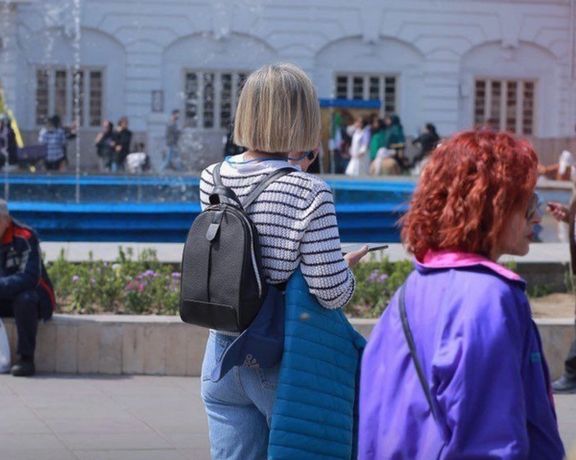
Images and reports on social media indicate that a large crowd in Rasht, northern Iran have been protesting evening after security forces tried to arrest three women over hijab.

Images and reports on social media indicate that a large crowd in Rasht, northern Iran have been protesting evening after security forces tried to arrest three women over hijab.
A video received by Iran International shows thousands of people gathered gathered outside the city hall in Rasht after the hijab police tried to whisk away three women. Onlookers intervened and rescued the women. As the news of the incident spread in the city, residents began to gather in the square in protest.
Some tweets say that gunshots were heard and security forces also fired tear gas, but it is too early to verify those reports.
Iran on Sunday officially announced the return of the hijab police to streets and earlier videos and reports received from Iran showed numerous incidents of confrontations between women who chose to appear without covering their head and plainclothes hijab enforcers.
Last September, the death of 22-year-old Mahsa Amini in hijab police custody triggered months of protests and the government for a while ordered enforcers off the streets. But in the past six months more and more women have shed the hijab and appear in public in ordinary attire.
Clerics and hardliners however have been pushing for a forceful reaction to what they call "loss of honor", "lawlessness" and a phenomenon threatening the very foundations of the clerical regime.
A video emerged on Saturday showing a hijab enforcer attacking and trying to detain a teenage girl. The video quickly became viral on Persian Twitter.
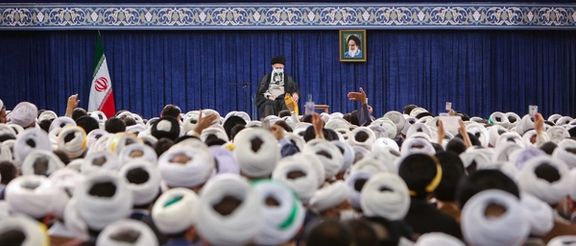
They preach on Fridays telling Iranians to tolerate economic hardship but Khamenei's ayatollahs enjoy immunity for corruption as his regional representatives.
Revelations about numerous cases of economic corruption and land and forest grabs by Ali Khamenei’s representatives across the country have outraged Iranians with fury so deep that even a few brave politicians have dared to speak out.
The Friday Prayer Imams, the regional representatives pushing the regime rhetoric, have managed to evade prosecution and remain immune to legal consequences.
The latest case involved Ayatollah Ahmad Alamolhoda -- the Friday Imam of Mashhad and the father-in-law of President Ebrahim Raisi– who has been pocketing large sums of money from the Goharshad endowment without any real responsibility or duties.
Last week, Vahid Ashtari, a hardline whistle-blower known for revealing corruption among Iran’s senior officials, published a thread of tweets with details about one of the biggest financial endowments of the country, Goharshad, ironically meaning Happy Jewel in English. The endowment is second only to the "Astan Quds Razavi," another charity controlled by clerics close to Alamolhoda. As part of the decree that gives the charitable foundation to Alamolhoda, he can have 10 percent of its total income as his personal salary, while another 10 percent provides the salaries of all the other staff who work there. Alamolhoda has confirmed the reports but claims that whatever he is doing is legal.
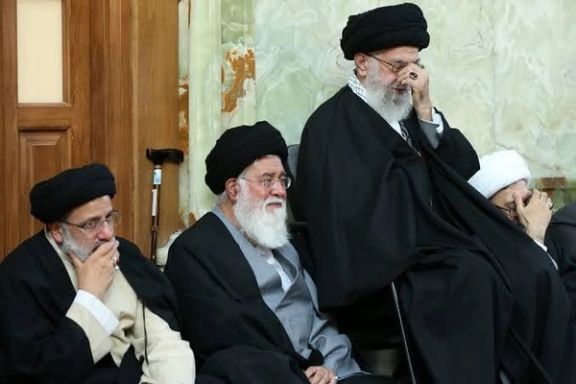
This means that the firebrand cleric, who had been serving as the trustee of the Goharshad Mosque endowment about seven years ago, receives a substantial monthly cut of approximately 100 billion rials (about $200,000), according to Iran International’s investigative journalist Mojtaba Pourmohsen. The average monthly salary of an Iranian is about $150 to $200.
Another high-profile case is Ayatollah Kazem Nourmofidi, the representative of the Supreme Leader in the northern Golestan province, whose rule over the province’s forest exploitation has always been known among locals. He owns the largest wood businesses in the region and his offspring are involved in at least 20 wood companies.
Nourmofidi, who is the brother in law of another great ayatollah Mohammad Fazel Langrani, is pocketing hundreds of thousands of dollars per month for wood smuggling from the lush forests of northern Iran.

Another Friday imam who is taking advantage of his relationship with Khamenei is Zeinolabedin Ghorbani, the former representative of Khamenei in Gilan province. He started a shopping mall project in the city and pre-sold the units upon the inauguration but never delivered them and people who paid found no remedy in courts.
Ashtari is a member of Edalat Khahan (Justice Seekers), a political group of mainly of young conservatives and university students who are loyal to Khamenei and are also close to former nuclear negotiator Saeed Jalili who ran against Raisi. In April last year, his revelations sparked the Layette-gate scandal that led to calls for the resignation of Speaker Mohammad-Bagher Ghalibaf and resurfacing of other alleged corruption cases against his family.
In June, Ashtari's investigations revealed in a series of tweets that a 150-hectare piece of land endowed by a local family in Qazvin including a farm with 1,000 cattle was rented out at a monthly rent of 10m rials (around $20 at current exchange rates) to Mona Chaychian, the daughter-in-law of the head of the State Endowment Organization Mehdi Khamoushi, another Khamenei appointee.
In a public meeting with a group of his representatives last year, Khamenei referred to economic corruption by top clerics as "economic activity" and advised his Friday imams to refrain from engaging in such matters due to their lack of expertise in the field.
Masih Mohajeri, another hardliner activist and politician, said in a strongly-worded article that, "People refuse to accept that in a country with such wealth and resources, a few individuals amass fortunes while millions of families are in poverty. This is not the right of the people who live in a wealthy country."
"Those who claim to have established justice in the Islamic Republic system should address these inequalities by sidelining those close to power who seize public assets and consider themselves righteous and superior to others,” he added. "Do not assume that the patience of the people is endless. Beware of the day when the army of the hungry rise against you."

The dean of Iran’s Al-Mustafa International University says some of the officials of the new government of Afghanistan have studied at the institution.
The university, which is the Islamic Propaganda Bureau of the Qom Seminary, is a state-funded university-style Shia seminary with branches in almost 60 countries.
In an interview, Ali Abbasi said people of 83 nationalities are studying at the institution while in its Kabul branch, more than 50 percent of scholars are Tajiks and Sunnis.
It is not clear exactly what is being taught at the Kabul branch after the Taliban takeover, but the branch’s website reported almost 4,500 scholars were studying there until 2019.
Abbasi did not explain how people who were trained in this Shiite complex took positions at the Sunni government of the extremist Taliban.
The Al-Mustafa University pays for hundreds of foreign students from China to Africa and Latin America who come to study and then return to spread Iranian Shiite teachings in their countries.
Observers say Al-Mustafa has become Iran's chief tool for promoting Shi'ism abroad. The university received around $80 million in the 2020-2021 Iranian budget, making it more important than ever. It is believed that Ayatollah Ali Khamenei's office and businesses under his control provide additional funding to Al-Mustafa.
In 2020, the United States imposed sanctions on the massive university network, alleging that it recruited Afghan and Pakistani students to fight in Syria.
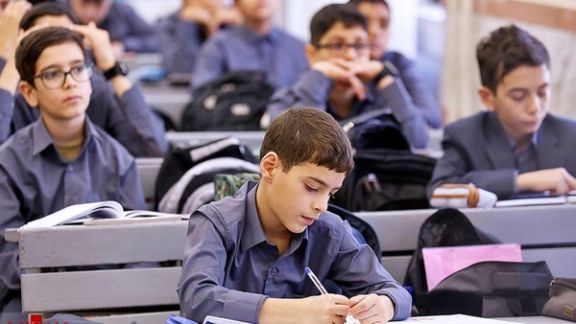
An official from the Iranian ministry of education says students are no longer required to learn English, but Arabic is still mandatory.
Fatemeh Ramezani, the Secretary of the Curriculum and Training Commission of the Supreme Council of Education, said Sunday that "students must learn a foreign language during their junior and senior secondary education, but this language is not necessarily English."
She said that instead of English, students can choose French, German, Italian, Russian, Chinese, and Spanish, as well as additional courses in Arabic.
Ramezani emphasized that Arabic "as the language of the Qur'an" is mandatory in the first and second year of secondary education.
In January, the Islamic Republic announced its intention to change the content of textbooks in foreign language schools after criticism by Iran’s ruler Ali Khamenei.
The head of the body for non-governmental schools, Ahmad Mahmoudzadeh, told ILNA: “We will have a call to produce content of language books for schools, which will be implemented in line with the order of the Supreme Leader,” suggesting locally produced, more religious material would replace any taught content.
Ali Khamenei has criticized teaching English in general, deemed the language of the West which he commonly refers to as 'the enemy'. In 2016 he criticized its being taught as early as kindergarten, leading the ministry of education to subsequently ban teaching English in primary schools.
In recent years, some government officials have also suggested that instead of English, the teaching of Russian, Chinese and German languages should be supported in Iran.
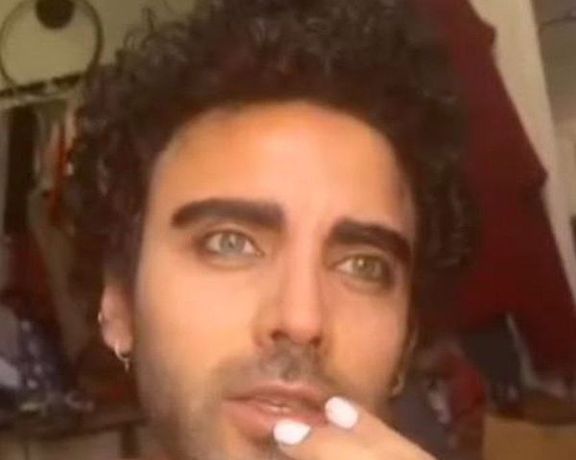
The police in Tehran arrested Mohammed Sadeghi, a young actor, during a raid on his home in an effort to clamp down on the anti-hijab movement.
Sadeghi posted a video on Instagram expressing his anger over the detention of yet another woman in morality police hands due to her inappropriate hijab.
“Believe me, if I saw such a scene, I might commit murder,” he wrote in the caption of his video. "Why do you get paid? To take people's daughters into a van and arrest them?"
Regime agents rushed to Sadeghi's house in Tehran in the wake of the post, when he jumped from the third floor in a bid to escape. A dramatic chase ensued, which he filmed and streamed live to Instagram, in spite of the regime's attempts to ban the app.
In a new campaign to enforce mandatory hijab, morality police have now returned to the streets in full force after a brief few months' respite following the worst of the unrest which erupted in September after the death of Mahsa Amini in morality police custody.
Women continue to defy the official dress code, particularly in Tehran, despite the crackdown, with huge numbers seen across the country's public spaces from malls to universities with their hair uncovered as they flout the mandatory hijab rules.
Experts fear the renewed zeal of the morality police risks reigniting tensions.

A famous victim of Iran's hijab rules, Sepideh Rashno has published details of how she was assaulted by several agents in her apartment last July, that electrified public opinion before the death of now famous Mahsa Amini.
In a post on Instagram, she dramatically explained the events after an acrimonious dispute with a hijab enforcer in a city bus on July 16.
A video of her quarrel with the hijab enforcer on social media went viral last year leading to her arrest by the regime forces.
“I was afraid and went to the balcony to scream and ask for help, but a number of regime agents threatened me not to scream, otherwise they would come up and break my neck!” read her post.
Rashno further added that over ten agents searched everywhere, and one was filming the procedure.
The 28-year-old artist and writer was tortured last year into denouncing herself and other activists, expressing regrets for her confrontation with the hijab enforcer.
Her ‘forced confessions’ was also aired on state-run television after she was brutally beaten before the telecast. Her suffering left a deep mark on many people and prepared the stage for large anti-government protests later in September when Mahsa Amini was killed in hijab police custody.
Rashno was found guilty of “association and collusion with the intention of committing a crime against the country's security" and “propaganda against the Islamic Republic” and given a five-year suspended jail sentence in December.
In May, she revealed on her Instagram account that she has been punished by her university with two semesters suspension.
"As a citizen, I have the right to choose the clothes I wear,” she wrote in response to the decision, adding that she plans to return to the university after her suspension with “her preferred outfit.”